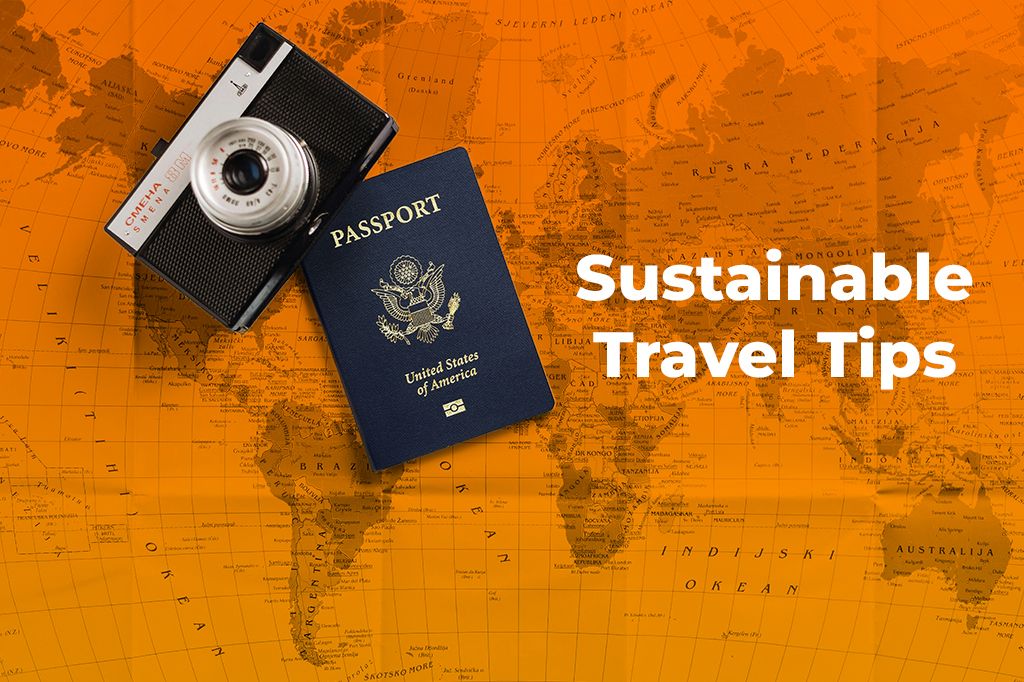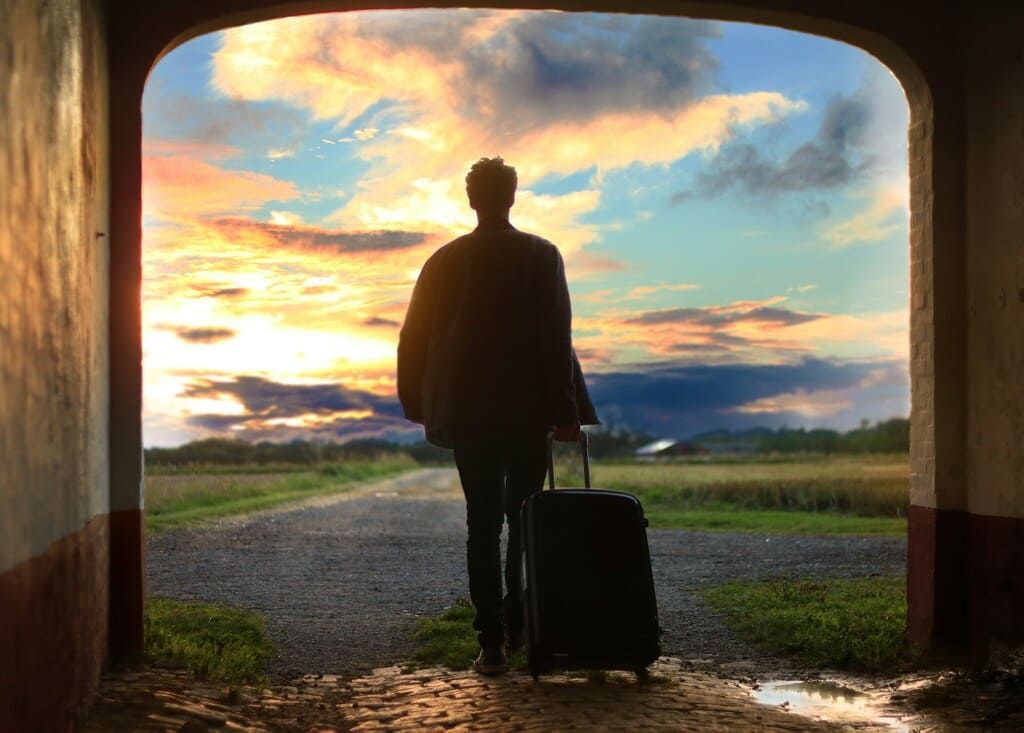Imagine returning from a vacation advertised as “eco-friendly.” Your hotel skipped daily laundry, handed out reusable bottles, and the tours claimed to be low-impact. But as you unpack, something feels off. You didn’t really connect with the people, culture, or spirit of the place. Was it truly sustainable or just painted green?
Sustainable travel is changing. It’s no longer about token gestures like bamboo toothbrushes or hanging up towels. Real sustainability is about how your presence shapes the place you visit, the people, the culture, and the environment.
In this article, we’ll explore what it means to travel with intention beyond greenwashing and offer sustainable travel tips to help you make choices that support communities, protect ecosystems, and create deeper, more meaningful experiences along the way.

Picture by Global Residence Index on Unsplash
The Myth of the “Good Traveler”
Is there a checklist for being a “good traveler”? Buy a carbon offset? Book an eco-lodge? Skip the flight? Done, right? Many of us want to travel in a way that’s kind to the planet and fair to the people we meet along the way. But even with the best intentions, it’s easy to fall into traps that feel sustainable on the surface but miss the bigger picture.
One common belief is that purchasing carbon offsets makes up for the environmental impact of flying or long-distance travel. They sound like the perfect solution: pay a little extra, and your emissions are magically balanced out. The truth is that offsets can support important projects, but they don’t undo the emissions from your flight or road trip. They’re a useful tool, not a get-out-of-jail-free card.
Similarly, booking a stay at an eco-lodge is seen as an easy way to travel responsibly. A solar panel and a compost bin might feel like you’re making the responsible choice (and sometimes, you are), but a truly sustainable trip goes deeper. Does the lodge support the local economy? Does it respect the environment and culture it’s built around? Labels can be misleading, so it’s worth digging a little deeper.
There’s also a growing idea that avoiding air travel entirely is the ultimate act of sustainability. That is not the whole story. Trains and buses still have environmental costs, and some destinations rely on flights to keep their economies alive. Sustainable travel isn’t about swearing off planes forever; it’s about being intentional with every choice.
Here’s the honest truth: There’s no such thing as impact-free travel. Every trip leaves a mark. But what kind of mark do you leave? That’s up to you.

Photo by Noah Buscher en Unsplash
The Conscious Compass: A Framework for Sustainable Decision-Making
Being a mindful traveler isn’t just about where you go; it’s about how you go. That’s where the C.A.R.E. model comes in. This simple framework helps you make smarter, more sustainable choices before, during, and after your trip. Each letter stands for a key axis to consider: Community, Access, Resources, and Exchange.
C – Community: Who really benefits from your travel dollars?
Every time you book a room, eat a meal, or join a tour, you’re casting a vote for the kind of economy you support. Are your dollars going to locally owned businesses or getting funneled to a faraway corporation? Choosing local guides, shops, and stays not only boosts the community but also deepens your connection to the place. It’s about giving back, not just passing through.
A – Access: Are you opening doors or closing them?
Travel can sometimes unintentionally push locals out of their own spaces. Sustainable travel means being aware of who has access to what. Are you in a place that limits use for residents? Are you helping protect shared spaces or contributing to overcrowding? Thoughtful travelers make room, literally and figuratively, for the people who live there.
R – Resources: What are you consuming, and at what cost?
Tourism consumes a lot of water, energy, food, and more. The question isn’t just how much you use, but where it comes from and how it’s managed. Are you staying somewhere that wastes resources or sources them responsibly? Are you leaving behind excess waste or keeping things lean? Sustainability starts with small decisions, like shorter showers and choosing restaurants that serve local produce.
E – Exchange: Are you just taking or giving something back?
True travel is a two-way street. Instead of simply consuming experiences, think about what you’re contributing. Are you learning about the culture in respectful ways? Supporting local artisans? Showing genuine curiosity? When travel becomes a mutual exchange, both visitors and hosts benefit. It’s the difference between extraction and connection.
These four principles form your conscious compass. When you check in with C.A.R.E., you move beyond good intentions and into thoughtful action.
Rethinking the Way We Travel
In a world flooded by fast getaways and checklist tourism, a new kind of travel is quietly redefining what it means to explore the world, and it’s not about going farther or faster. It’s about going deeper.
Micro-tourism puts communities, culture, and sustainability at the center of the journey. These are small-scale, story-rich experiences that flip the script on traditional tourism. Instead of chasing bucket-list landmarks, you find meaning in the details, the places mass tourism overlooks, the people guidebooks forget, and the rhythms that make a place feel alive.
Take Bhutan, where tourism is guided not by profit but by Gross National Happiness. Visitors pay a daily fee that funds cultural and environmental protection, ensuring that tourism benefits local life. In Louisiana, the Black Heritage Trail invites travelers to engage with African American history in ways that support communities and preserve legacy. In Sicily, Slow Food tours connect guests to traditional farmers and seasonal ingredients, offering a taste of heritage through every bite. These are blueprints for how global travel can empower local stories.
And it’s not just about where you go, but how you go. Fast travel is the new plastic straw: convenient but costly. Rushed itineraries can leave behind more trash than memories: carbon-heavy flights, disposable meals, and missed chances for connection. In contrast, slow travel means longer stays and lighter footprints. Rent an Airbnb for a month instead of hopping cities. Cook with a local instead of crowding into a buffet line. Visit three community spots (parks, libraries, barbershops) for every tourist site you check off. This simple “3-to-1 Rule” invites travelers into the everyday rhythm of a place.
Overlooked Areas of Travel Sustainability
Although recycling is commonly seen as the go-to sustainable action, it actually ranks lowest on the waste hierarchy. The most effective approach begins with refusing unnecessary items, followed by reducing overall consumption, and then reusing existing materials. So recycling, while still important, comes only after these steps, as it consumes energy and resources.
For instance, using refillable toiletry containers, carrying a reusable water bottle, and avoiding single-use plastics all help prevent waste at the source. These simple habits are far more powerful than sorting plastic at the end of your trip. Every item you don’t use is one less thing the planet has to deal with.
Even if a hotel advertises itself as green, its energy use might be stressing the local community. Local electricity grids can buckle under the pressure of tourist demand. Especially in popular destinations, the energy needs of hotels, such as air conditioning, hot showers, and heated pools, can overwhelm systems designed for much smaller populations.
The good news is that you have more power than you think. Skipping the A/C, switching off lights, and unplugging electronics when not in use all make a real difference and support the people who live there year-round.
Travel insurance gives peace of mind, but it also connects travelers to healthcare systems that aren’t always ready for an influx of foreign patients. More visitors mean more medical visits and more medical waste. In many places, this waste isn’t handled sustainably, so it adds pollution to already-stressed environments. And don’t get me wrong, this is not about skipping care when you need it, it’s about being aware. Choosing providers with strong waste practices, avoiding unnecessary treatments, and supporting clinics that serve the local community all help keep healthcare sustainable for everyone.

Photo byThe World Hopper
Another overlooked piece of sustainable travel? How you stay connected Roaming SIM cards mean plastic waste, shipping emissions, and unnecessary packaging. eSIM technology, on the other hand, is a digital, contract-free way to access mobile data wherever you go.
Stay connected while you travel, try Yoho Mobile’s free eSIM trial and get instant access to mobile data in most countries. Planning a longer trip? Use code YOHO12 for 12% off your eSIM plan.
What Nature Can Teach Us About Moving Ethically
Travel has always been part of the human story. But in today’s world of fast flights and crowded itineraries, it’s easy to forget that movement can (and should) have rhythm, purpose, and respect. Looking at the natural world offers powerful lessons on how to travel more ethically and meaningfully.
Every year, animals move across continents in patterns honed by survival, seasons, and instinct. These migrations are not random; they are deeply connected to ecosystems and governed by balance. Humans, too, have a long history of movement shaped by nature, although sometimes forgotten. Today’s travelers can take a lesson from these patterns. Rather than moving through the world at full speed, we can begin to ask: What’s the impact of our presence here? Are we moving with care or leaving disruption behind? Travel that honors nature’s timing respects local rhythms, stays aware of its footprint, and can feel more connected and less extractive.
In a world that pushes us to keep moving, one of the most radical things a traveler can do is sit still. That’s the idea behind “sit spot” journaling, a nature therapy practice that invites people to return to the same natural place regularly, sit quietly, observe, and reflect. There’s no checklist or photo op. Just you, the environment, and your own attention. Adopting this practice means trading constant motion for deeper presence. It fosters ecological awareness, calms the nervous system, and offers insight that guidebooks never will. Most importantly, it teaches us to notice and, in doing so, to care.

Photo byArthur Tseng en Unsplash
Some of the world’s most grounded and respectful travel practices come from Indigenous communities. Among the Sámi people of northern Europe, movement through the landscape is guided by animal-tracking ethics, a quiet, respectful way of reading the land and moving through it with care. The goal is to understand it and to move in a way that doesn’t disturb the balance of the ecosystem.
This kind of travel is humble. It doesn’t center the traveler but the place. And it reminds us that moving through nature isn’t a right, but a relationship, one that requires learning, listening, and respect.
What You Bring Says Who You Are
Ever had that “aha!” moment when you realized less is more? Many travelers have experienced the transformative power of minimalist packing. When they pared down their belongings, they found travel became less stressful, more flexible, and a lot more enjoyable. What you pack for a trip is a reflection of who you are and what you stand for. What you bring tells a deeper story about your values, ethics, and the kind of impact you want to have on the world.
We all know reusable water bottles and shopping bags are good for the environment, but true ethical packing lies in understanding the journey your items take before they make it into your bag and the impact they leave behind. Take your hiking boots, for instance. Those cheap, trendy boots may seem like a great deal, but did you know they come with hidden costs? Poor working conditions and environmentally damaging manufacturing processes. And the tech gadgets we love? Many are made using minerals extracted in ways that harm people and the planet.
If it is important to know where things come from, it’s even more important to know how long they last. Packing items that are durable and repairable, instead of ones that break easily and end up in the trash, reduces waste and the demand for new resources. This approach helps make your travel more sustainable, one thoughtful choice at a time.
But here’s the good news: you don’t have to sacrifice style or performance for sustainability. By choosing brands with transparent, ethical supply chains, you’re actively supporting a more responsible way of doing business.

Photo by Mantas Hesthaven on Unsplash
Additional sustainable packing tips:
- Pack light to reduce your carbon footprint. Lighter luggage means less fuel consumption, especially on flights.
- Embrace multi-purpose items to save space and weight, because who really needs 10 different things when one will do?
- Go digital with your travel documents, ditch the paper, and reduce waste.
- Switch to solid toiletries and biodegradable products to cut back on plastic.
Exit Strategy: Leave a Place Better Than You Found It
Travel doesn’t end when your trip does. In fact, how you leave a place matters just as much as how you arrived. A thoughtful exit strategy ensures your presence contributes to a community’s well-being, not just during your stay, but long after you’re gone.
Start with something small: write a postcard to your host town. Share your gratitude, reflect on what you’ve learned, and let the place know it matters. It’s a humble but powerful way to acknowledge the connection and the hospitality extended to you. Another impactful ritual is donating useful items you no longer need. We, too often, accumulate gear, supplies, or clothing that won’t make the return trip. Rather than tossing them, donate to local mutual aid groups or community organizations. These items can find a second life in the hands of someone who truly needs them. Turning excess into opportunity.
In the end, sustainable travel thrives when travelers become long-term allies, not just passing guests. When you say goodbye with care, generosity, and humility, you do more than exit a place, you become part of its story, in the best possible way.
